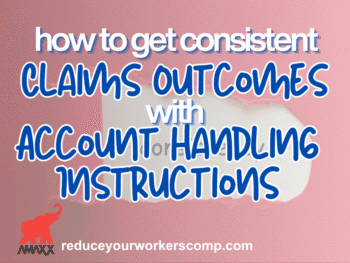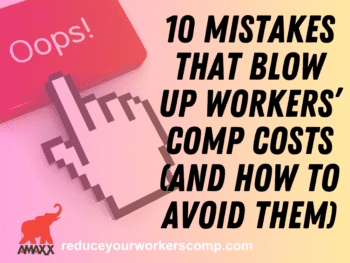
With that in mind, getting a handle on your finances also involves monitoring any claims made on workers’ compensation cases. While your goal should always be to emphasize workplace safety, you will almost undoubtedly have to deal with a workplace injury or injuries at one time or another in running your establishment.
There are a handful of factors that you should never overlook when it comes to making sure you are properly handling your accounts.
They include:
1. Account Handling Instructions (AHIs) allows you to properly oversee workers’ comp claims and litigation.
Click Link to Access Free PDF Download
For those not entirely up to speed on AHI, it represents the deal and/or understanding between both the insured and the field adjusters at the insurer’s satellite locations that direct the handling of each and every suit and claim, both litigated and those not litigated.
Once the AHI is negotiated, the insured has to come to terms with all internal claims handling personnel with the provisions of the AHI, providing them with a written copy to make sure they fully realize the responsibilities for critical aspects of claims handling.
Additionally, along with containing policyholder data and information regarding coverage and dissemination of data (loss runs), AHI can also contain other lesser-known guidelines.
Address and Incorporate These Items
When looking at what should be discussed and/or incorporated into AHI for a business to have more of a say in the situation, look at:
• Medical Bill Review – Who is auditing medical bills in regard to your open claims? Also, look at how and when are medical bills audited? Who will audit the hospital expenses? Also, what level of hospital bills is audited? Do you determine if medical case management is warranted? Lastly, is there immediate and automatic referral of complex lost-time cases to medical case management?
• Utilization Review – In this area, how do you determine which bills and services will be reviewed? Also, look at who you have retained to provide this service.
• Referral to Vocational Rehabilitation – Who determines if vocational rehabilitation is warranted? Also, ask yourself, do you automatically refer complex lost-time cases to vocational rehabilitation? Finally, will reports be passed along to your company?
• Alternative Dispute Resolution/Mediation – Make sure you know whether or not alternative dispute resolutions are considered on all claims for all lines.
FREE DOWNLOAD: “Step-By-Step Process To Master Workers’ Comp In 90 Days”
• Some Other Items to Go Over – Finally, check to see if it is possible to alter your account instructions. Also, determine whether or not you have the right to review the complete original claim file? Are you or are subrogating insurance carriers’ part of the Center for Public Resources (a non-profit organization whose members sign-off on avoiding litigation and try to pursue alternative means of dispute resolution)? If that is the case, is this noted?
Knowing the rules and regulations makes it much easier to handle your accounting needs, especially as it relates to workers’ comp claims.

Author Michael Stack, CEO Amaxx LLC. He is an expert in workers’ compensation cost containment systems and helps employers reduce their workers’ comp costs by 20% to 50%. He works as a consultant to large and mid-market clients, is a co-author of Your Ultimate Guide To Mastering Workers Comp Costs, a comprehensive step-by-step manual of cost containment strategies based on hands-on field experience, and is the founder & lead trainer of Amaxx Workers’ Comp Training Center.
Contact: mstack@reduceyourworkerscomp.com.
Workers’ Comp Roundup Blog: https://blog.reduceyourworkerscomp.com/
©2020 Amaxx LLC. All rights reserved under International Copyright Law.
Do not use this information without independent verification. All state laws vary. You should consult with your insurance broker, attorney, or qualified professional.
FREE DOWNLOAD: “Step-By-Step Process To Master Workers’ Comp In 90 Days”














